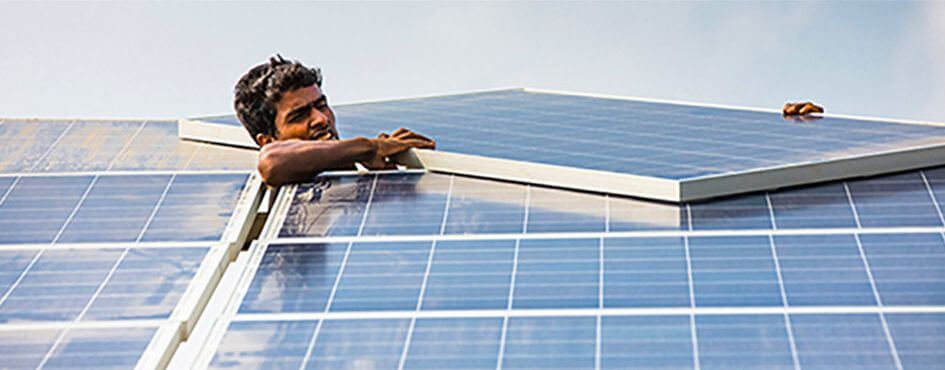Solving energy poverty is not a technology issue. With affordable new services, performance improvements, and the ability to pay-as-you-go on mobile money platforms, decentralized renewable energy (DRE) can enable the delivery of basic Tier 1 and Tier 2 energy access (e.g., light and mobile phone charging to everyone by 2030). While many countries are fighting a losing battle using business-as-usual approaches to reach electrification goals, the DRE sector—ranging from micro-hydro to mini-grids and mobile solar farms—is providing energy to more customers than many of the largest global utilities today. Not only is DRE a viable energy option, but evidence suggests that DRE can deliver a basic level of universal energy access in a fraction of the time and cost of conventional approaches
However, the challenges that limit the DRE sector’s ability to accelerate adoption of environmentally-friendly technology to achieve energy access—last mile-delivery, adoption at scale, leveling the playing field, financing—requires creativity, ingenuity and tenacity across the ecosystem to solve. In short, it takes human capital—the collective skills, knowledge, and intangible human assets—that will make or break SDG7—the sustainable development goal to ensure access to affordable, reliable, sustainable and modern energy for all. Despite the importance of human capacity supporting the spread of DRE technology, there has yet to be a coordinated global effort to develop a DRE-specific human capital pipeline to meet the needs of this rapidly growing sector.
Mostly commonly referred to as capacity-building, workforce development for decentralized renewables is not just about the DRE value chain, but also relates to capacity within a broader ecosystem: banks (commercial and development), utilities, technical assistance, advocates, financial professionals, engineers of all kinds, lawyers and entrepreneurs. The impact potential is enormous: Today, there are an estimated 170,000 jobs in the solar-powered lighting sector alone. And in the future the entire DRE value chain--including sales, installation, service, appliances, O&M—is projected to create 4.5 million jobs globally by 2030 (IRENA).
According to the Miller Center for Social Entrepreneurship’s Universal Energy Access: An Enterprise System Approach(2015) these millions of jobs are likely to spread across thousands of small and medium-sized businesses—up to 20,000. The more DRE companies there are, the more likely the nearly bottomless market of 2 billion people without reliable access to energy will have their needs met. Bloomberg New Energy Finance is bullish on the prospects for the sector: they predict off-grid solar technologies will firmly establish themselves in the mainstream over the next five years, generating sales of around $3.1 billion by 2020.
All of this potential for DRE to be a jobs creation engine and transform the lives of billions will go unrealized unless the global community prioritizes the human capital needs for a creative, empowered, educated entrepreneurs and workers. The energy sector globally is experiencing challenges getting good personnel. Industry hiring managers often report that lack of candidate training, experience, or technical skills are major problems. The 2017 Deloitte Human Capital Trends Report identified the key people-related issues that keep energy executives up at night: organizational structure, careers and learning, performance management, talent acquisition, and leadership. More, many of the jobs in clean technology and renewable energy needed to address the access problem are not in the 50 countries that suffer the most from energy poverty. Notably, Africa has a paltry 62,000, or 0.6%, of those jobs, and just 15,000 of them are in sub-Saharan Africa (not including South Africa).
We need to focus the global community today on developing the knowledge and interest in the sector to create a workforce that can build tens of thousands of companies (to get 20,000 to succeed many more will try and fail) that will deliver over 4 million jobs in next 13 years. While there are some excellent examples of DRE training and mentoring—Schneider Electric’s Access to Energy training programs or Free Electrons’ utility-backed cleantech accelerator that connects startups with utility companies to co-create the future of energy—we need a wholesale effort to collaboratively develop the human capacity pipeline needed to accelerate universal access to energy. Partnerships with universities and utilities, vocational schools, student organizations, and Workforce Development Boards are all tools that have been used for successful transitions for similar sub-sectors of the energy field, including energy efficiency and utility-scale solar.
Globally, future generations must be prevented from simply defaulting to fossil fuels for energy. If kerosene, diesel, and coal continue to be prioritized energy sources, climate change impacts will be exacerbated and universal energy access will not be achieved. As the global community rallies around SDG7, we must also develop a specific focus on training, workforce and ecosystem development and exciting the next generation about distributed renewable energy—or we will fail to achieve one of the most important and ambitious goals of this century.
Kristina Skierka and Danny Kennedy
